21 Microbial Diseases of the Skin and Eyes

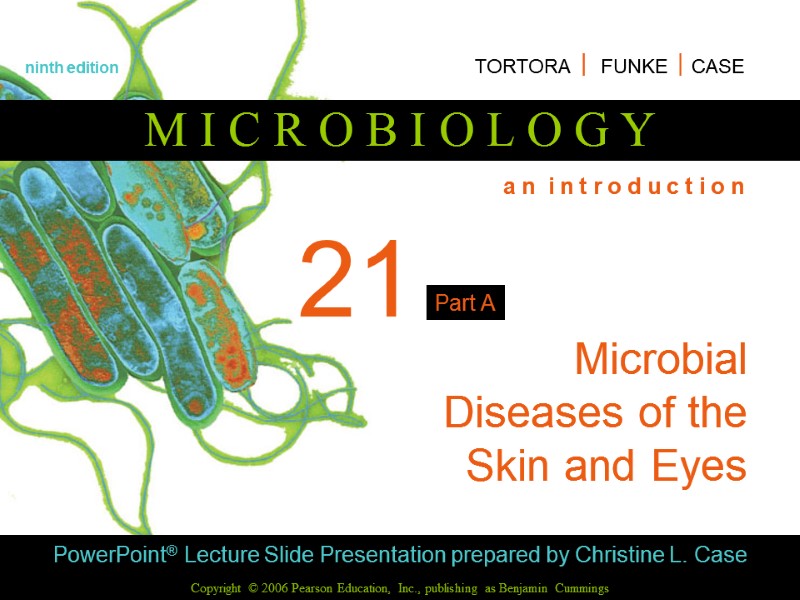
21 Microbial Diseases of the Skin and Eyes
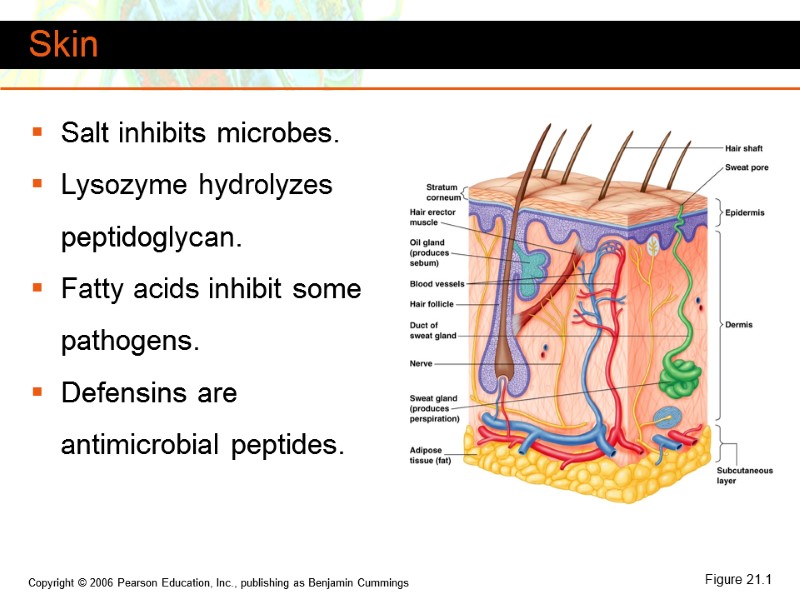
Skin Salt inhibits microbes. Lysozyme hydrolyzes peptidoglycan. Fatty acids inhibit some pathogens. Defensins are antimicrobial peptides. Figure 21.1
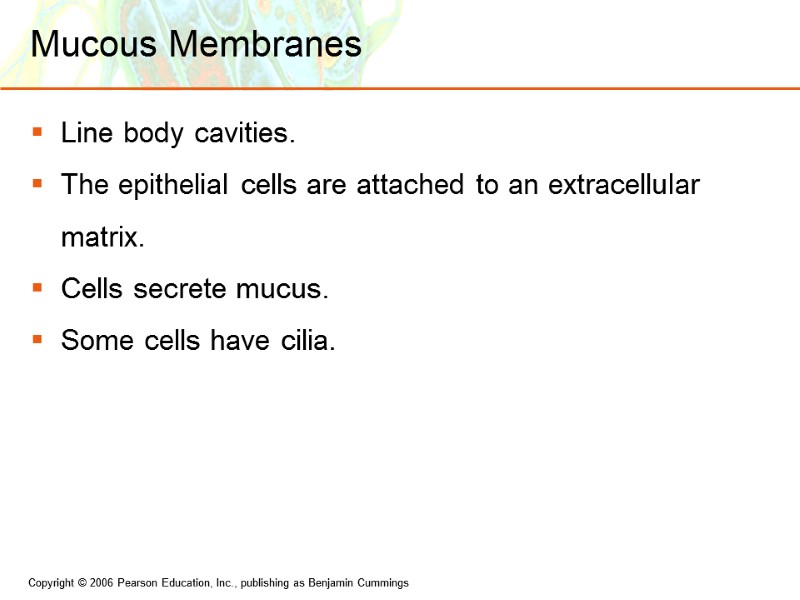
Mucous Membranes Line body cavities. The epithelial cells are attached to an extracellular matrix. Cells secrete mucus. Some cells have cilia.

Normal Microbiota of the Skin Gram-positive, salt-tolerant bacteria Staphylococci Micrococci Diphtheroids Figure 14.1a
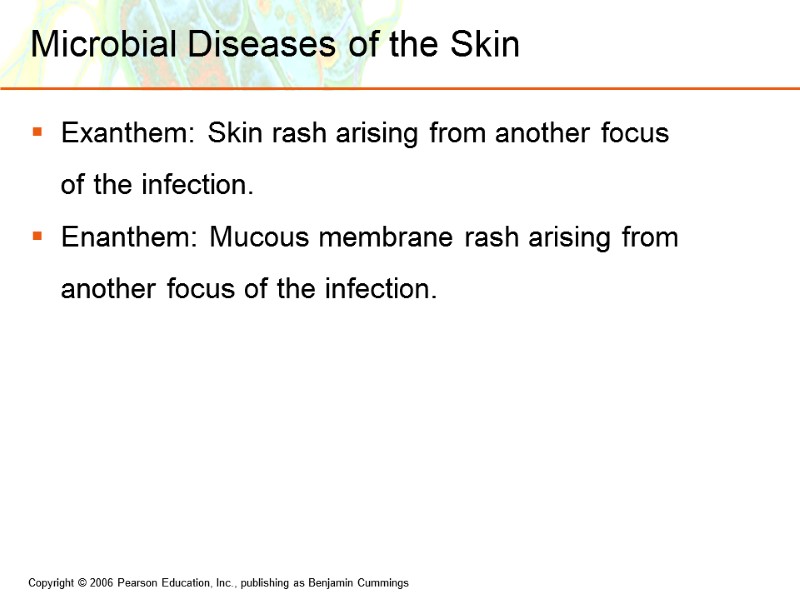
Microbial Diseases of the Skin Exanthem: Skin rash arising from another focus of the infection. Enanthem: Mucous membrane rash arising from another focus of the infection.
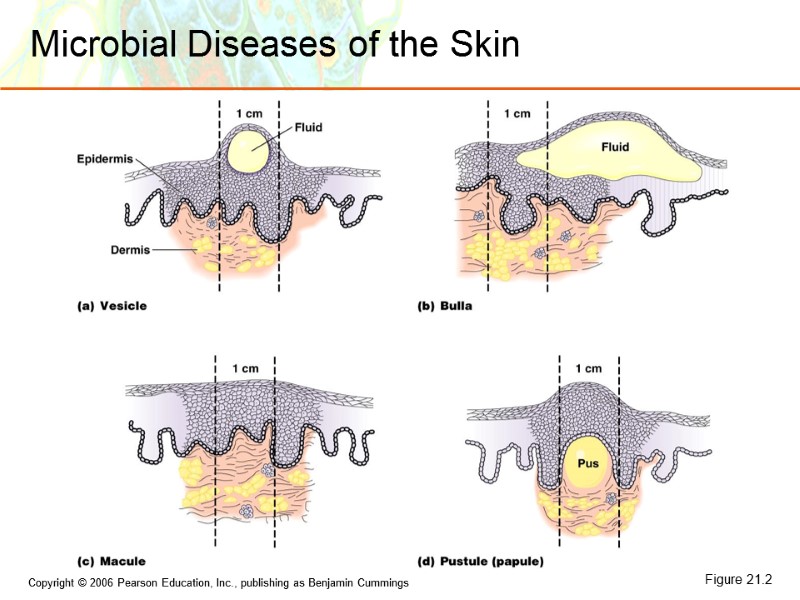
Microbial Diseases of the Skin Figure 21.2
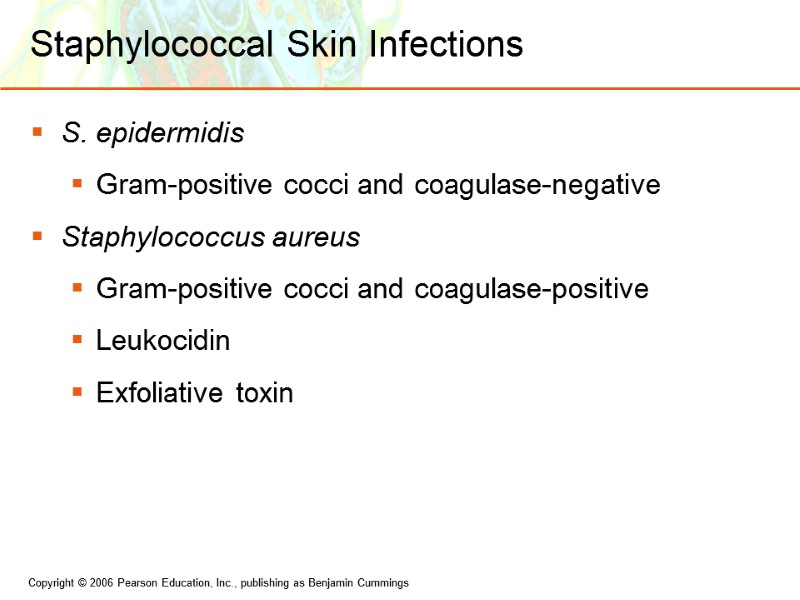
Staphylococcal Skin Infections S. epidermidis Gram-positive cocci and coagulase-negative Staphylococcus aureus Gram-positive cocci and coagulase-positive Leukocidin Exfoliative toxin

Staphylococcal Biofilms Figure 21.3
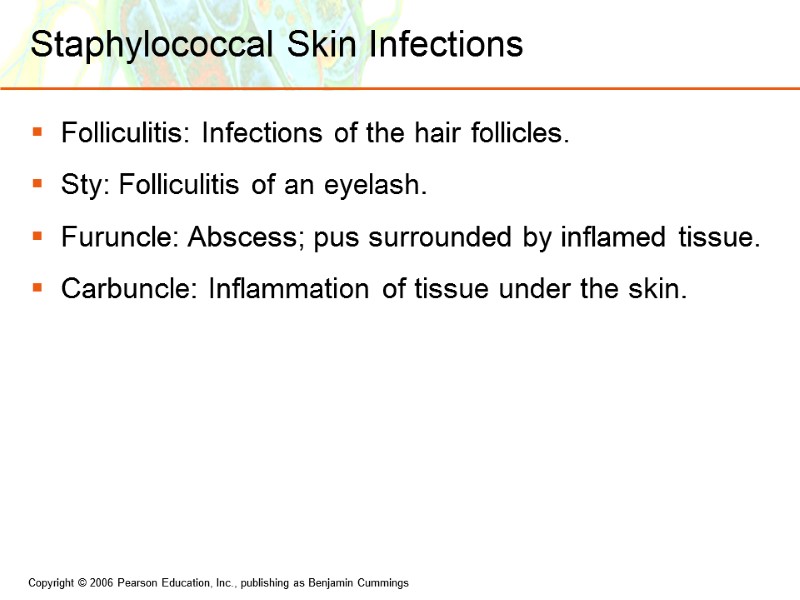
Staphylococcal Skin Infections Folliculitis: Infections of the hair follicles. Sty: Folliculitis of an eyelash. Furuncle: Abscess; pus surrounded by inflamed tissue. Carbuncle: Inflammation of tissue under the skin.
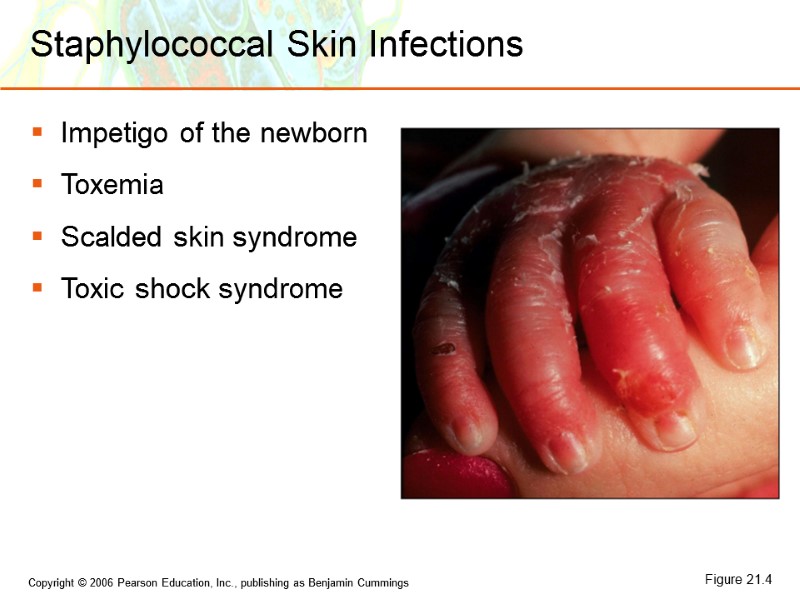
Staphylococcal Skin Infections Impetigo of the newborn Toxemia Scalded skin syndrome Toxic shock syndrome Figure 21.4
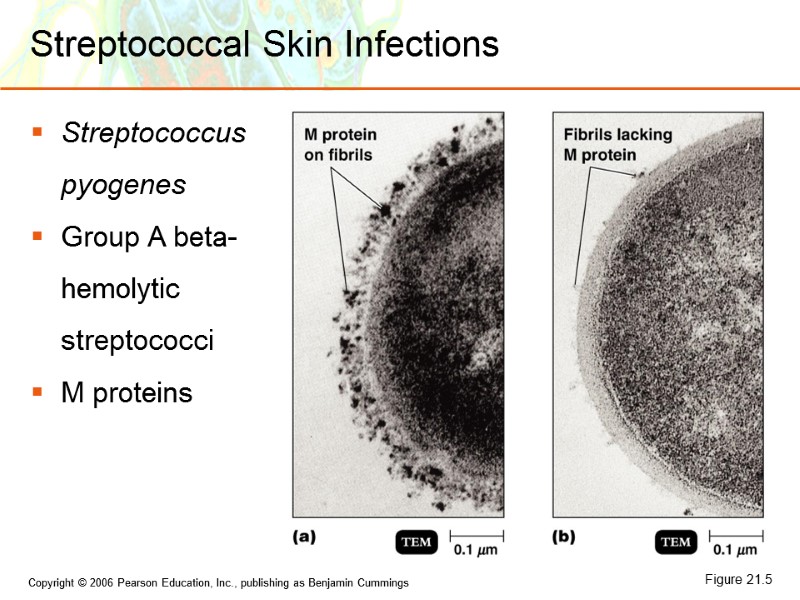
Streptococcal Skin Infections Streptococcus pyogenes Group A beta-hemolytic streptococci M proteins Figure 21.5
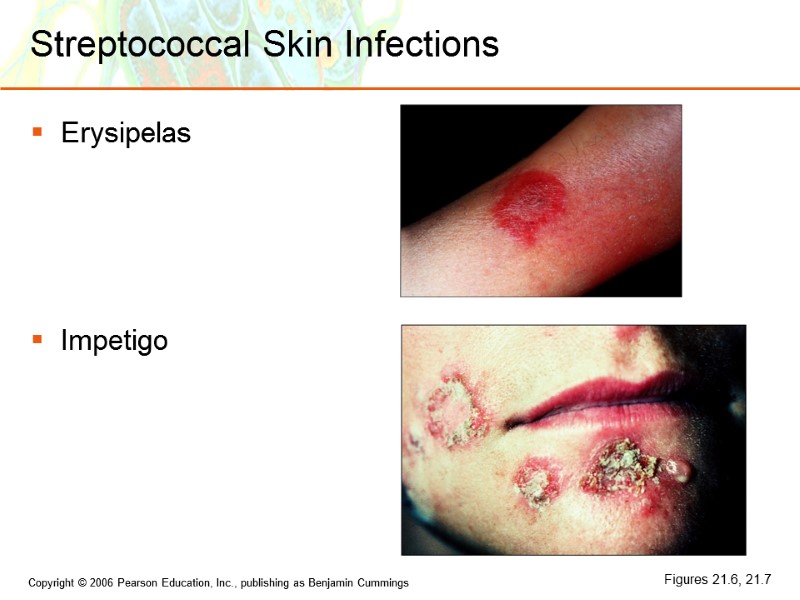
Streptococcal Skin Infections Erysipelas Impetigo Figures 21.6, 21.7

Invasive Group A Streptococcal Infections Streptokinases Hyaluronidase Exotoxin A, superantigen Cellulitis Necrotizing fasciitis Figure 21.8
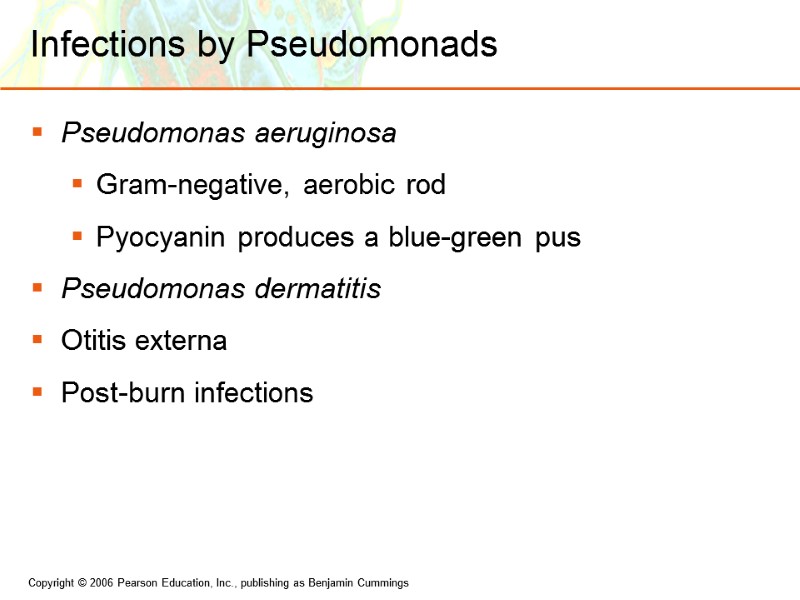
Infections by Pseudomonads Pseudomonas aeruginosa Gram-negative, aerobic rod Pyocyanin produces a blue-green pus Pseudomonas dermatitis Otitis externa Post-burn infections
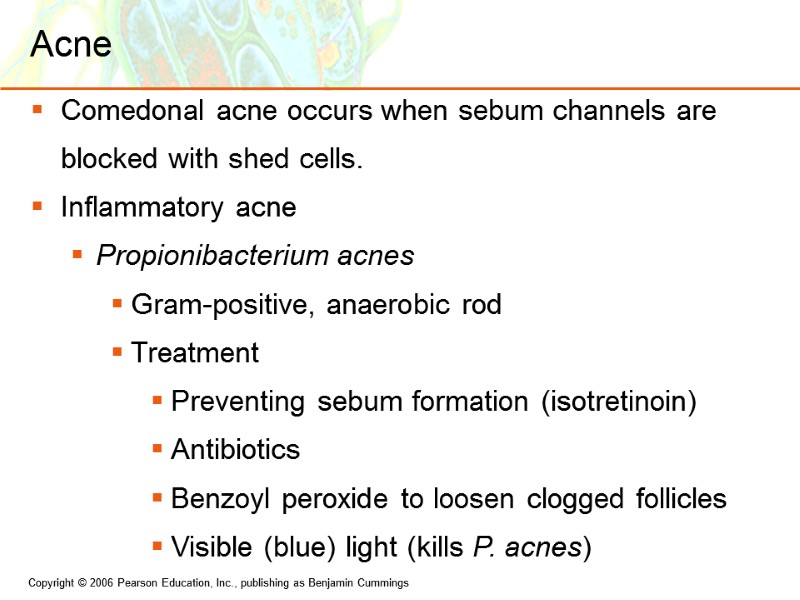
Acne Comedonal acne occurs when sebum channels are blocked with shed cells. Inflammatory acne Propionibacterium acnes Gram-positive, anaerobic rod Treatment Preventing sebum formation (isotretinoin) Antibiotics Benzoyl peroxide to loosen clogged follicles Visible (blue) light (kills P. acnes)
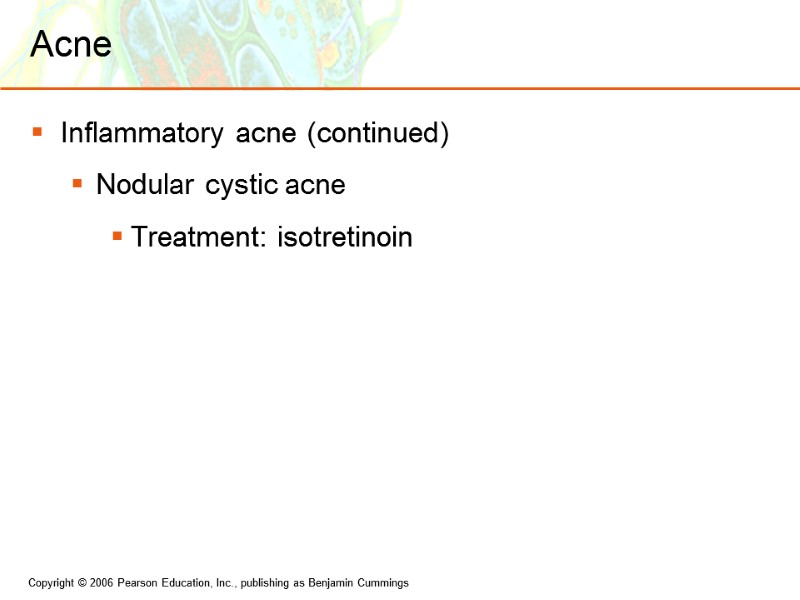
Acne Inflammatory acne (continued) Nodular cystic acne Treatment: isotretinoin
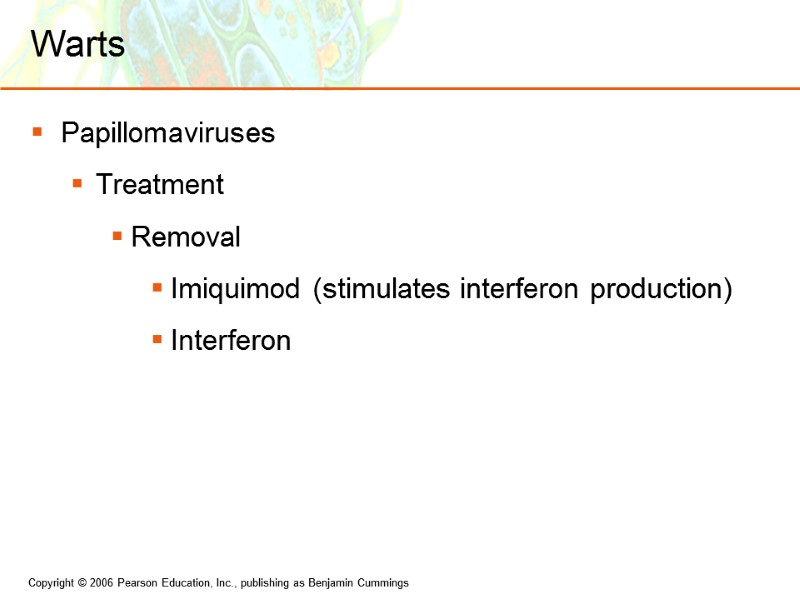
Warts Papillomaviruses Treatment Removal Imiquimod (stimulates interferon production) Interferon
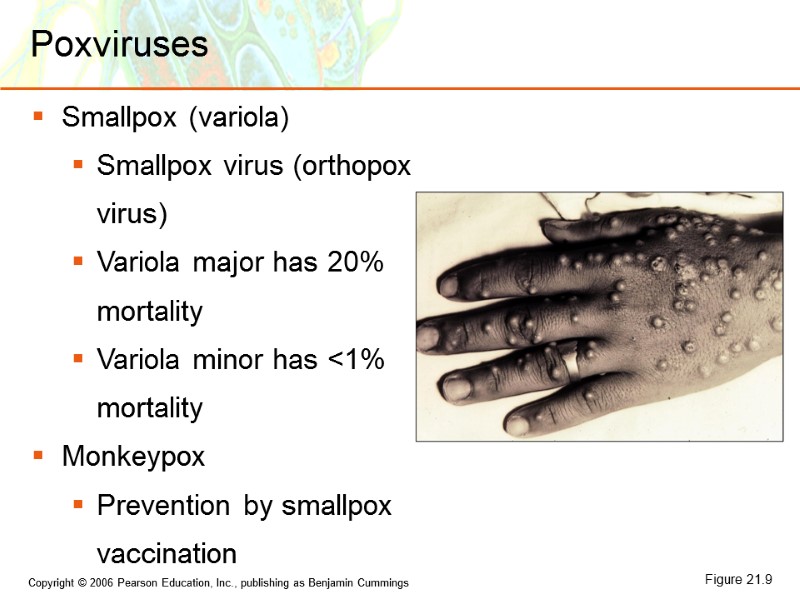
Poxviruses Smallpox (variola) Smallpox virus (orthopox virus) Variola major has 20% mortality Variola minor has <1% mortality Monkeypox Prevention by smallpox vaccination Figure 21.9
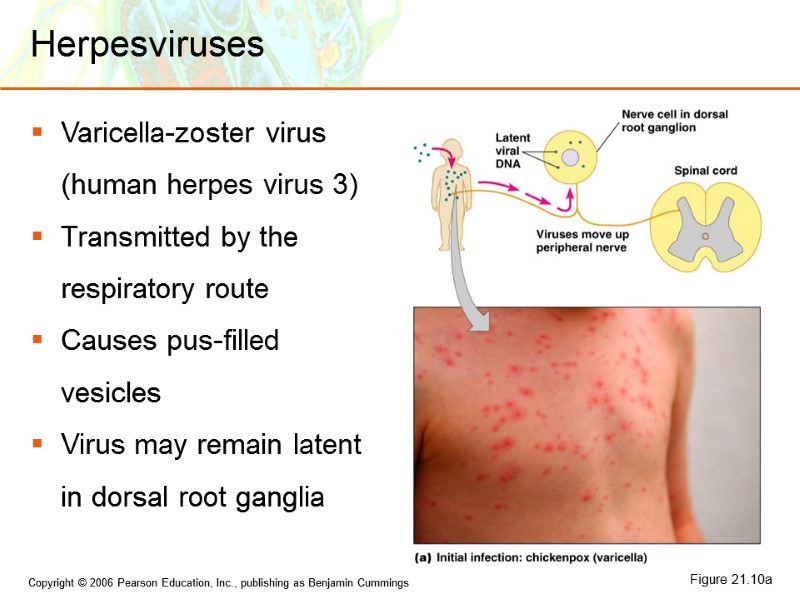
Herpesviruses Varicella-zoster virus (human herpes virus 3) Transmitted by the respiratory route Causes pus-filled vesicles Virus may remain latent in dorsal root ganglia Figure 21.10a
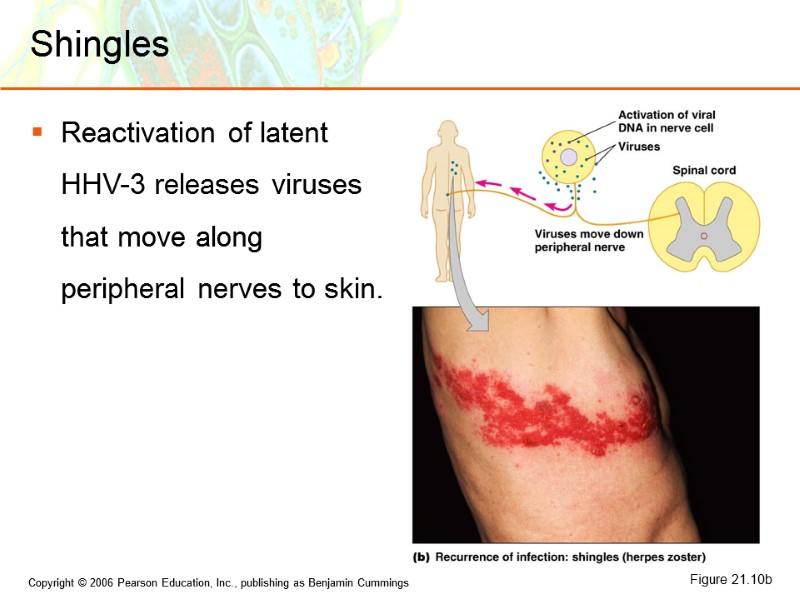
Shingles Reactivation of latent HHV-3 releases viruses that move along peripheral nerves to skin. Figure 21.10b
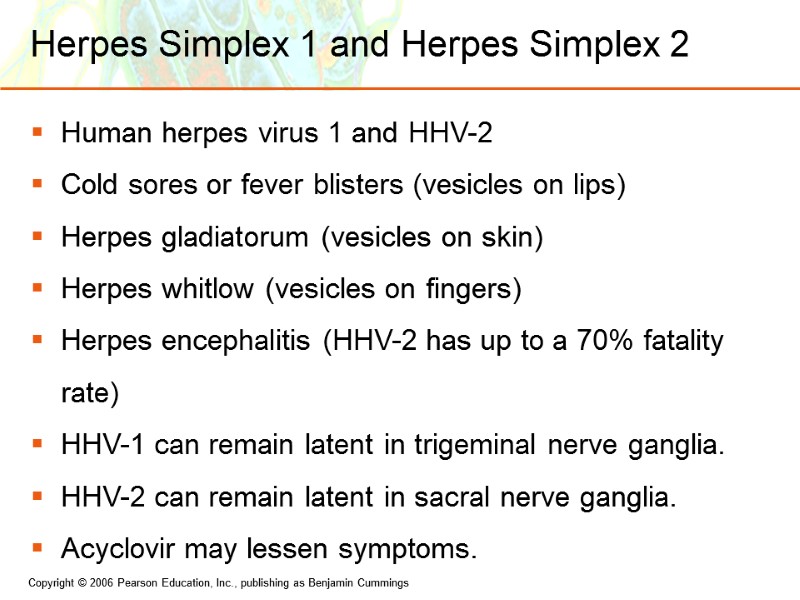
Herpes Simplex 1 and Herpes Simplex 2 Human herpes virus 1 and HHV-2 Cold sores or fever blisters (vesicles on lips) Herpes gladiatorum (vesicles on skin) Herpes whitlow (vesicles on fingers) Herpes encephalitis (HHV-2 has up to a 70% fatality rate) HHV-1 can remain latent in trigeminal nerve ganglia. HHV-2 can remain latent in sacral nerve ganglia. Acyclovir may lessen symptoms.
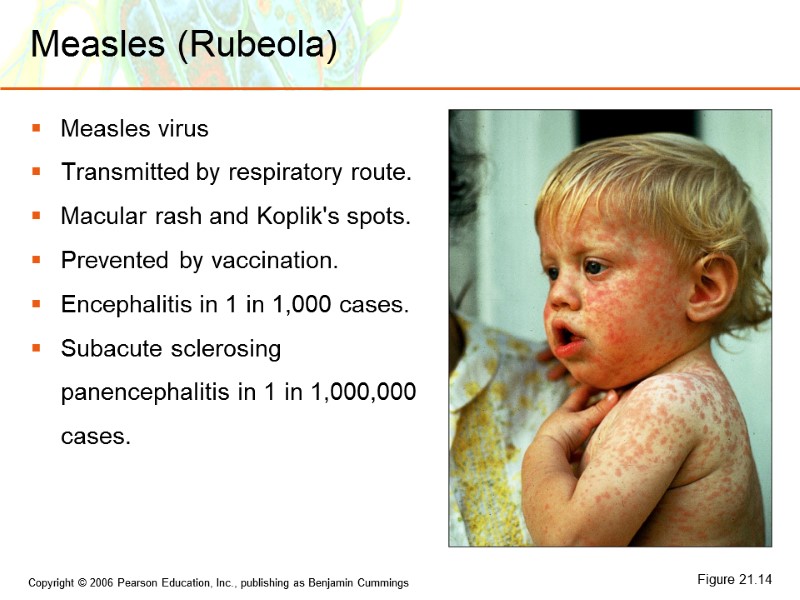
Measles (Rubeola) Measles virus Transmitted by respiratory route. Macular rash and Koplik's spots. Prevented by vaccination. Encephalitis in 1 in 1,000 cases. Subacute sclerosing panencephalitis in 1 in 1,000,000 cases. Figure 21.14
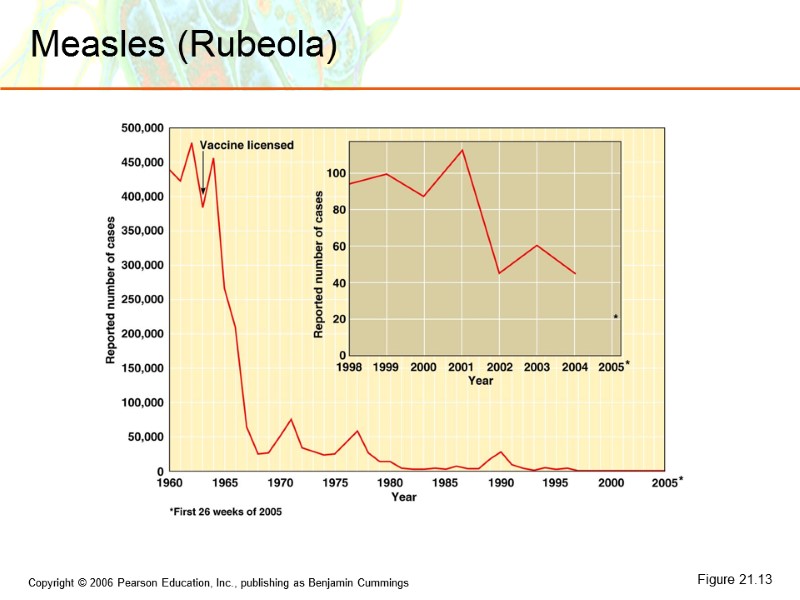
Measles (Rubeola) Figure 21.13

Rubella (German Measles) Rubella virus Macular rash and fever Congenital rubella syndrome causes severe fetal damage. Prevented by vaccination Figure 21.15
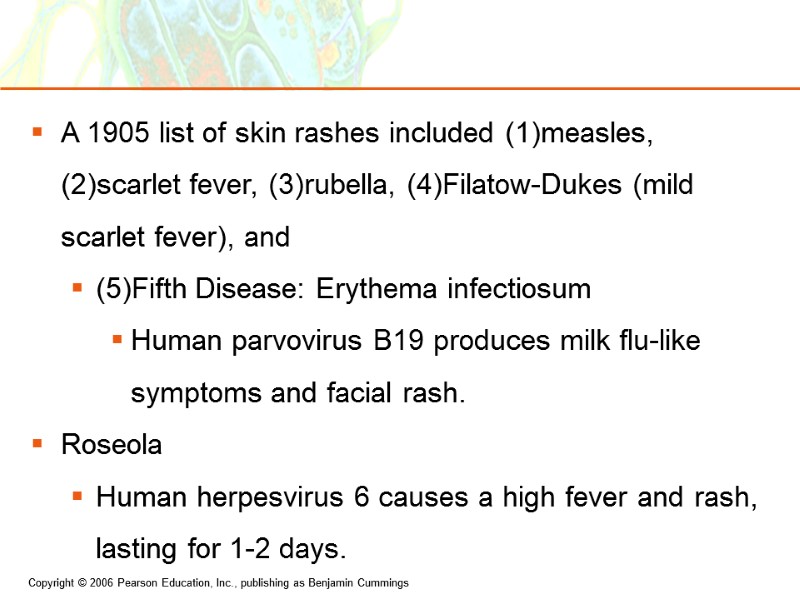
A 1905 list of skin rashes included (1)measles, (2)scarlet fever, (3)rubella, (4)Filatow-Dukes (mild scarlet fever), and (5)Fifth Disease: Erythema infectiosum Human parvovirus B19 produces milk flu-like symptoms and facial rash. Roseola Human herpesvirus 6 causes a high fever and rash, lasting for 1-2 days.
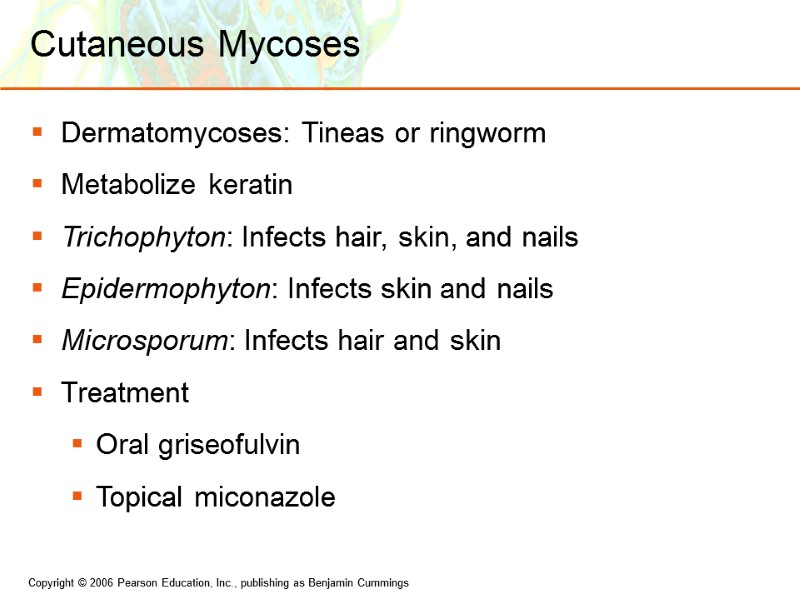
Cutaneous Mycoses Dermatomycoses: Tineas or ringworm Metabolize keratin Trichophyton: Infects hair, skin, and nails Epidermophyton: Infects skin and nails Microsporum: Infects hair and skin Treatment Oral griseofulvin Topical miconazole
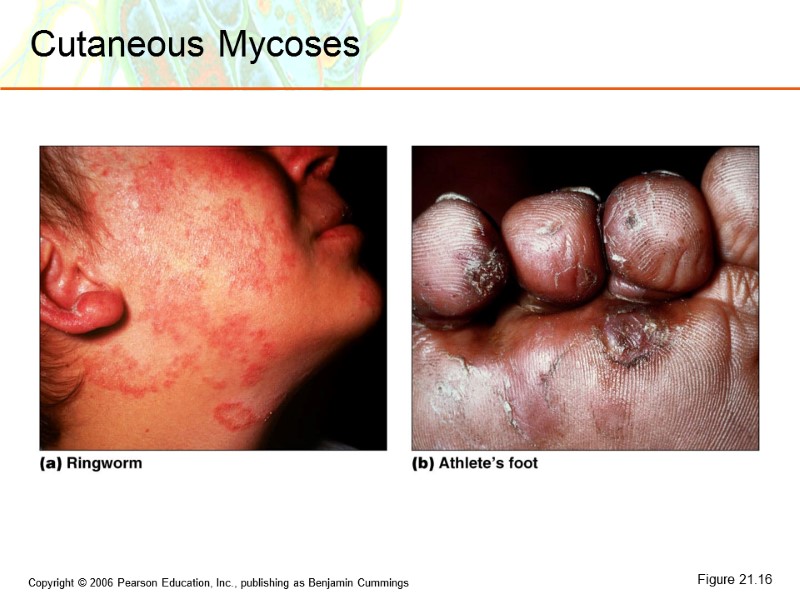
Cutaneous Mycoses Figure 21.16
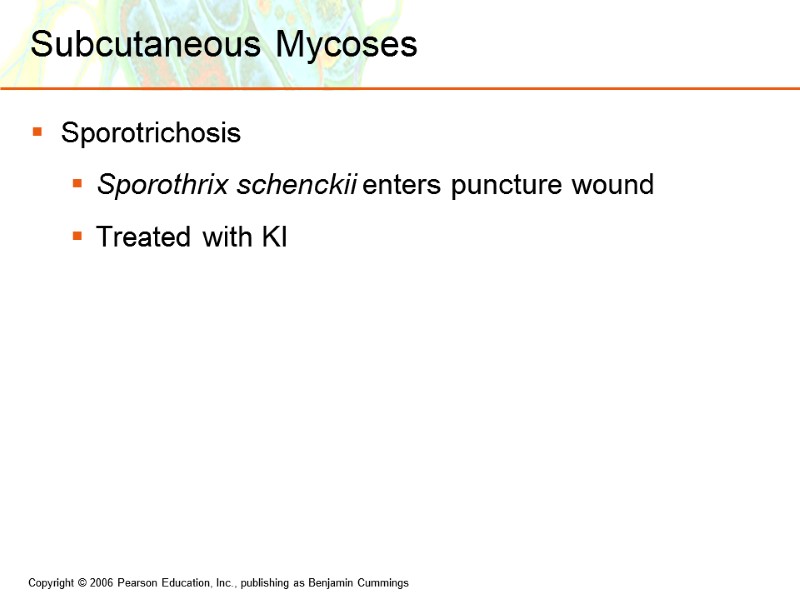
Subcutaneous Mycoses Sporotrichosis Sporothrix schenckii enters puncture wound Treated with KI
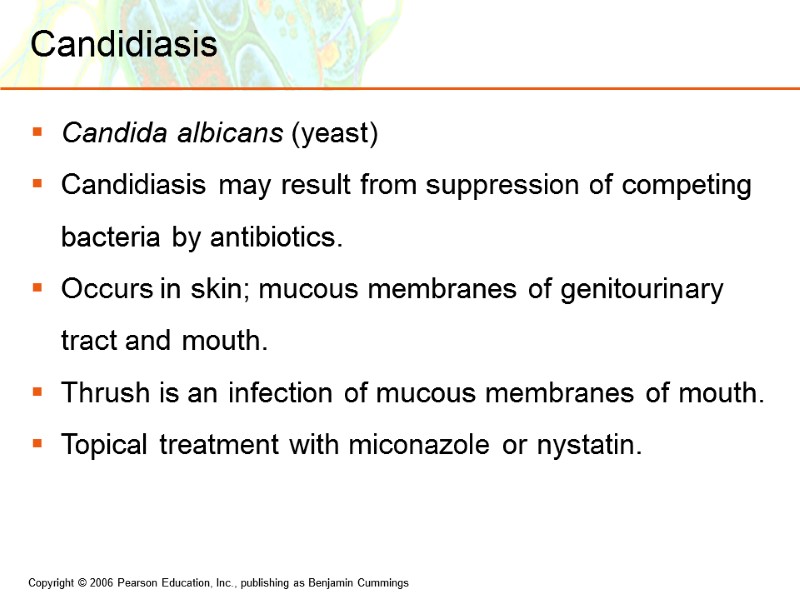
Candidiasis Candida albicans (yeast) Candidiasis may result from suppression of competing bacteria by antibiotics. Occurs in skin; mucous membranes of genitourinary tract and mouth. Thrush is an infection of mucous membranes of mouth. Topical treatment with miconazole or nystatin.

Candidiasis Figure 21.17
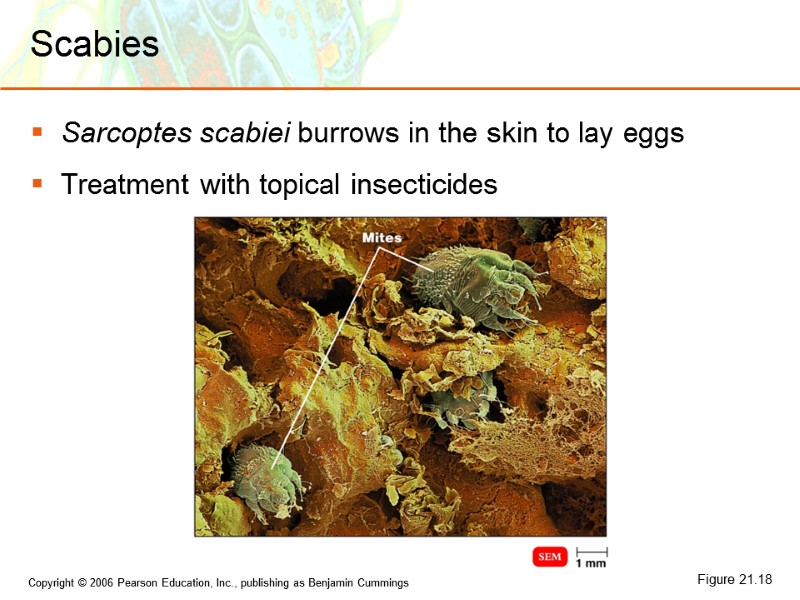
Scabies Sarcoptes scabiei burrows in the skin to lay eggs Treatment with topical insecticides Figure 21.18
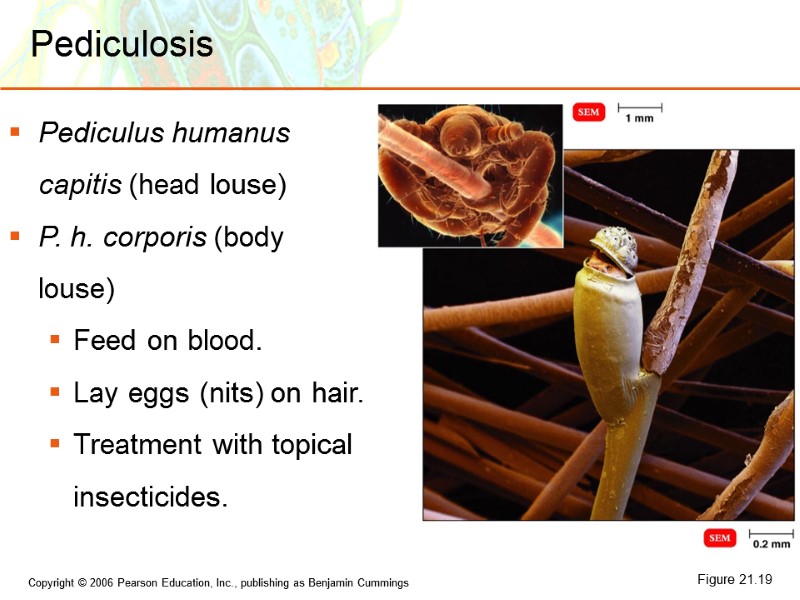
Pediculosis Pediculus humanus capitis (head louse) P. h. corporis (body louse) Feed on blood. Lay eggs (nits) on hair. Treatment with topical insecticides. Figure 21.19
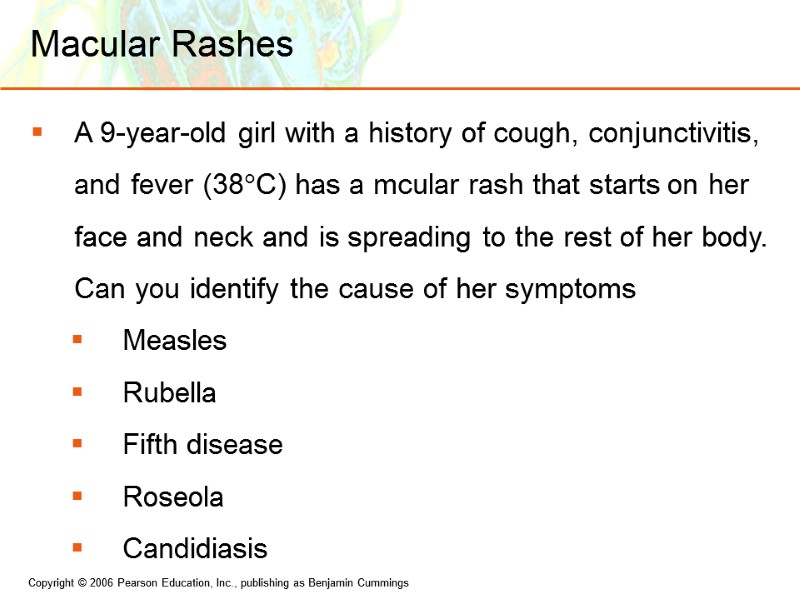
Macular Rashes A 9-year-old girl with a history of cough, conjunctivitis, and fever (38C) has a mcular rash that starts on her face and neck and is spreading to the rest of her body. Can you identify the cause of her symptoms Measles Rubella Fifth disease Roseola Candidiasis
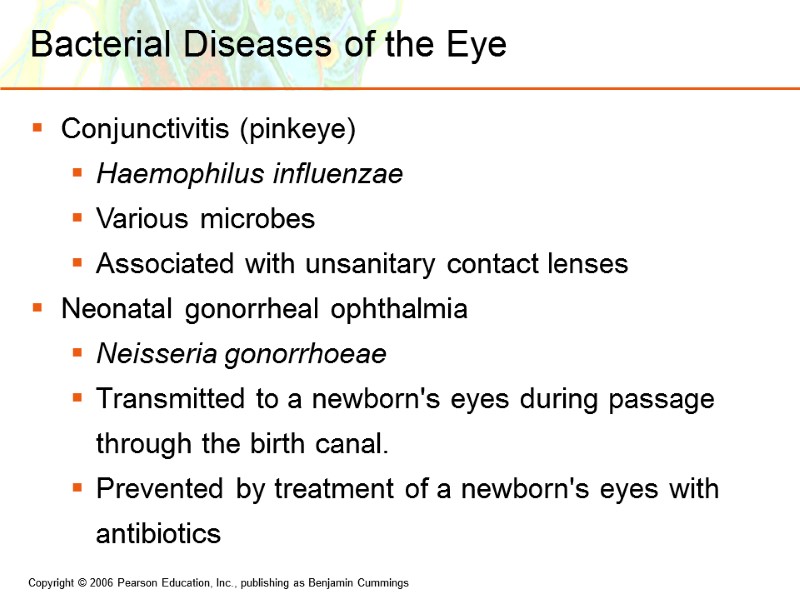
Bacterial Diseases of the Eye Conjunctivitis (pinkeye) Haemophilus influenzae Various microbes Associated with unsanitary contact lenses Neonatal gonorrheal ophthalmia Neisseria gonorrhoeae Transmitted to a newborn's eyes during passage through the birth canal. Prevented by treatment of a newborn's eyes with antibiotics
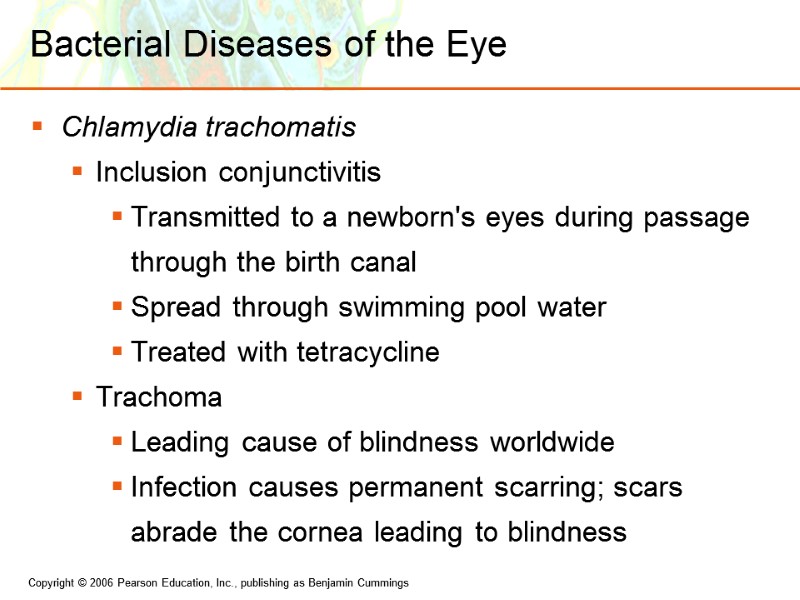
Bacterial Diseases of the Eye Chlamydia trachomatis Inclusion conjunctivitis Transmitted to a newborn's eyes during passage through the birth canal Spread through swimming pool water Treated with tetracycline Trachoma Leading cause of blindness worldwide Infection causes permanent scarring; scars abrade the cornea leading to blindness
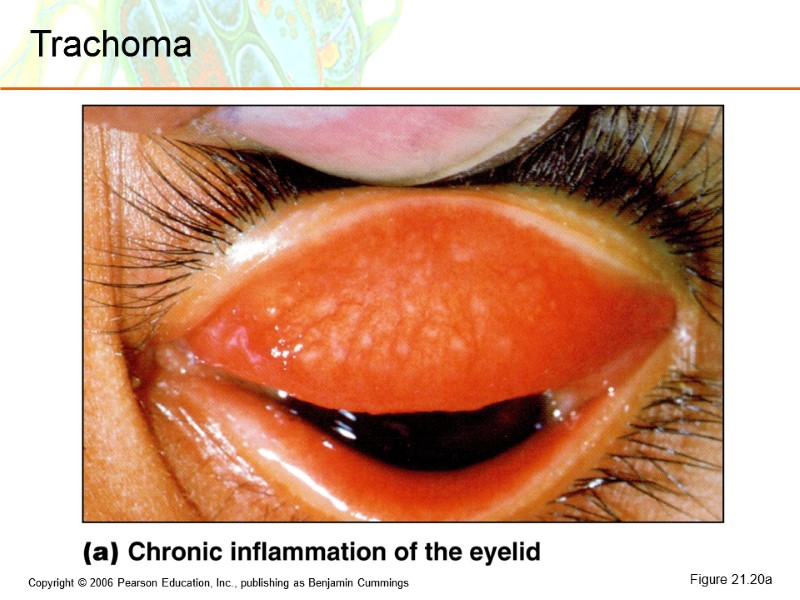
Figure 21.20a Trachoma
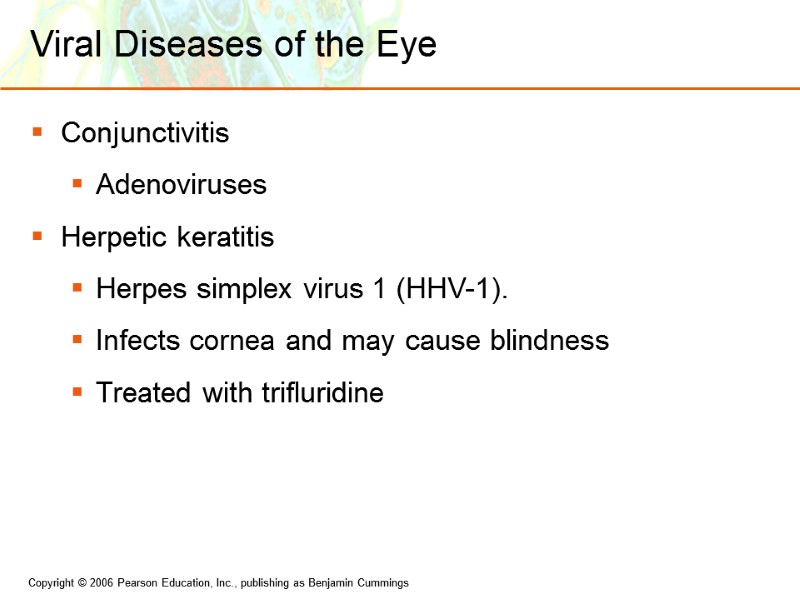
Viral Diseases of the Eye Conjunctivitis Adenoviruses Herpetic keratitis Herpes simplex virus 1 (HHV-1). Infects cornea and may cause blindness Treated with trifluridine
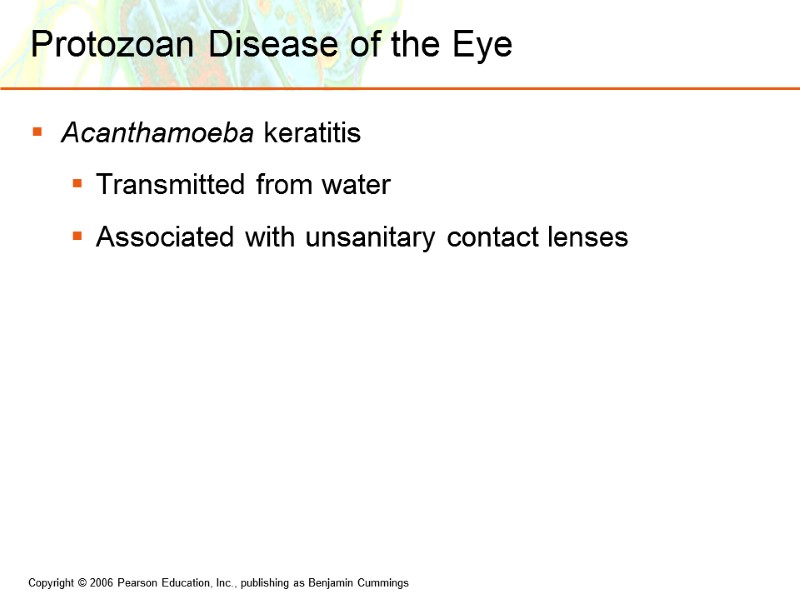
Protozoan Disease of the Eye Acanthamoeba keratitis Transmitted from water Associated with unsanitary contact lenses
5158-microbial_diseases_of_the_skin_and_eyes.ppt
- Количество слайдов: 38

